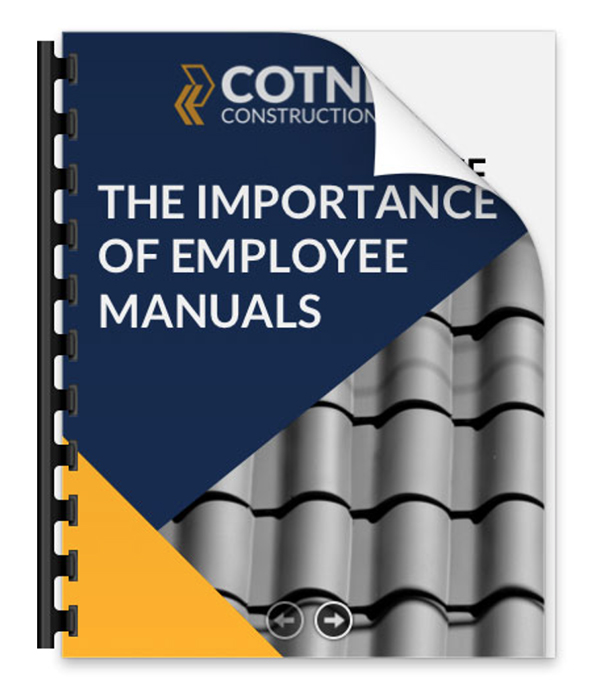Free eBook: The Importance of an Employee Handbook

By Cotney Construction Law.
A good employee manual increases efficiency, decreases costs, and limits liability and legal costs.
A well-written employee handbook sets the rules and expectations for employees and can save you money in a number of ways. A good employee manual serves to increase administrative efficiency, decrease operating costs, and limit potential liability and legal costs.
Employees should be expected and required to be familiar with the employee handbook and all of the rules and procedures within it, and sign that they received and understand it.
Employee handbooks directly reduce several operating costs associated with running a construction company. For example, employee manuals can require employees to pay for their own uniforms, lost keys, damaged property, traffic tickets, and a number of other items. A well-drafted travel or drive time policy can reduce the company’s vehicle and travel expenses and protect the company from potential wage and hour liability related to an employee’s travel time. In addition, an employee manual with a statutory compliant drug-free workplace policy can entitle employers to a 5% reduction on workers’ compensation insurance premiums. Similarly, employers are entitled to a 2% reduction if they have a statutory compliant safety provision within their employee handbook.
It’s imperative that an employee handbook be updated each year due to changes to the law and rules and procedures in the construction industry.
Author’s note: The information contained in this article is for general educational information only. This information does not constitute legal advice, is not intended to constitute legal advice, nor should it be relied upon as legal advice for your specific factual pattern or situation. Regulations and laws may vary depending on your location. Consult with a licensed attorney in your area if you wish to obtain legal advice and/or counsel for a particular legal issue.





















Comments
Leave a Reply
Have an account? Login to leave a comment!
Sign In